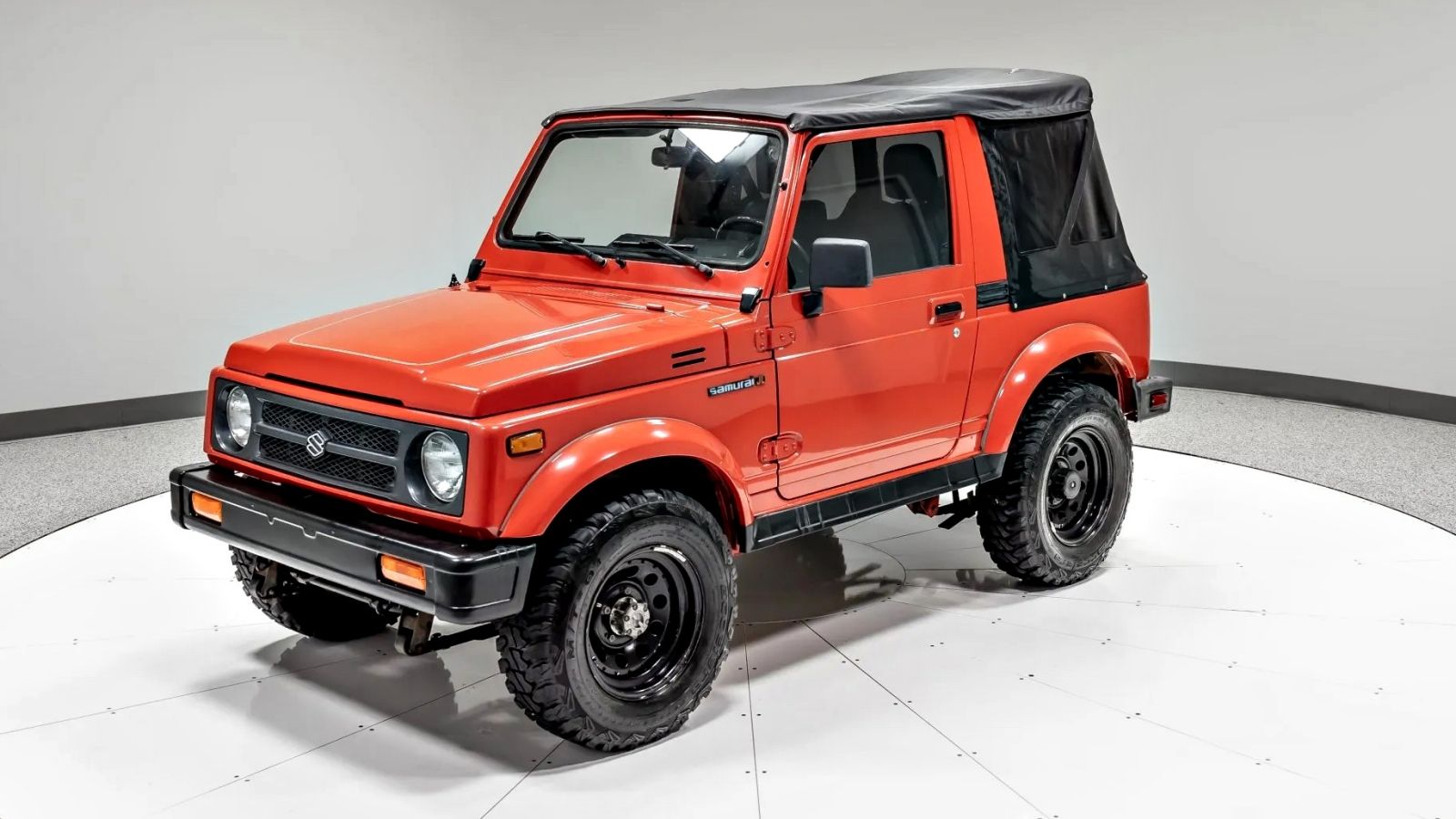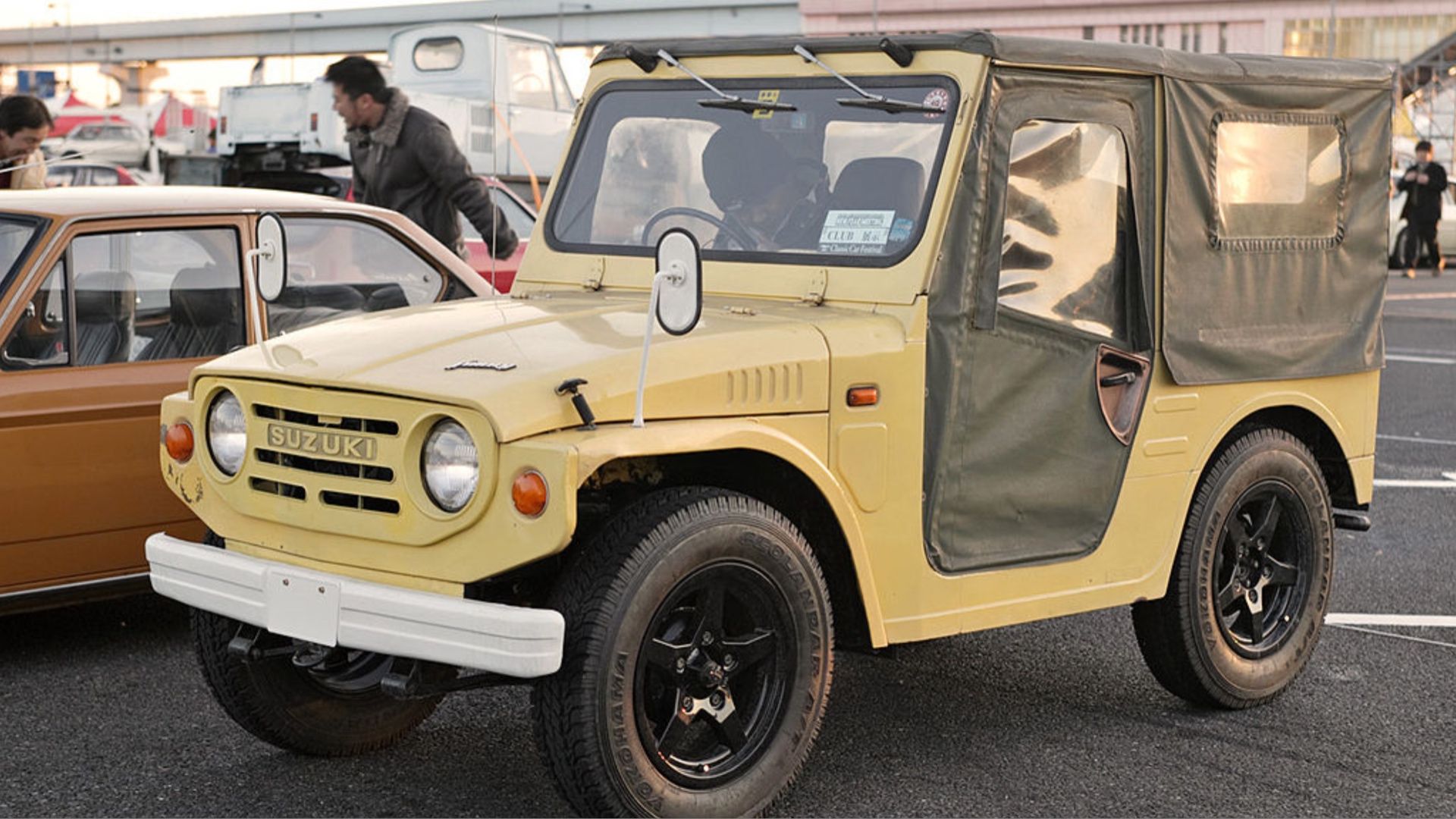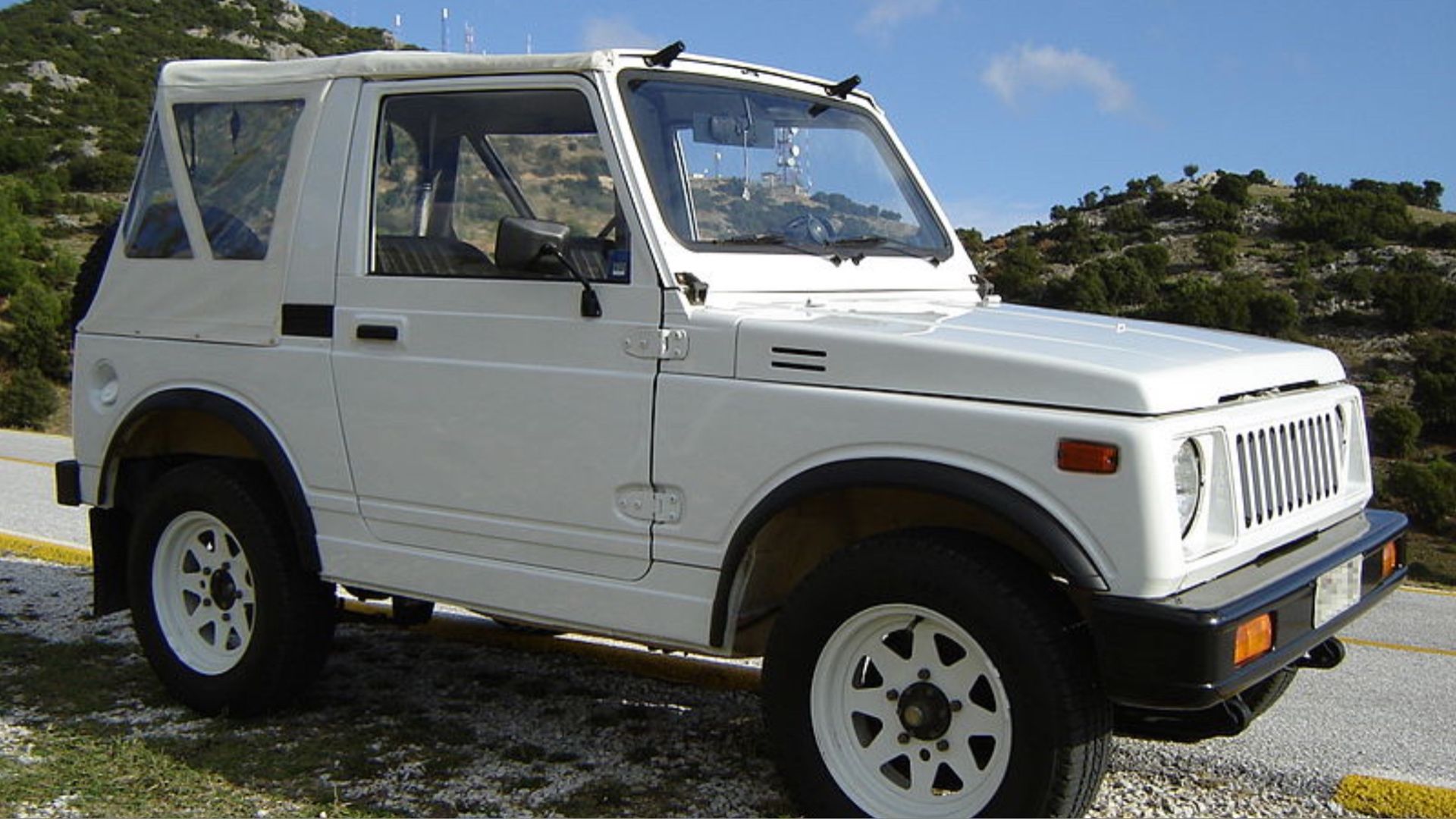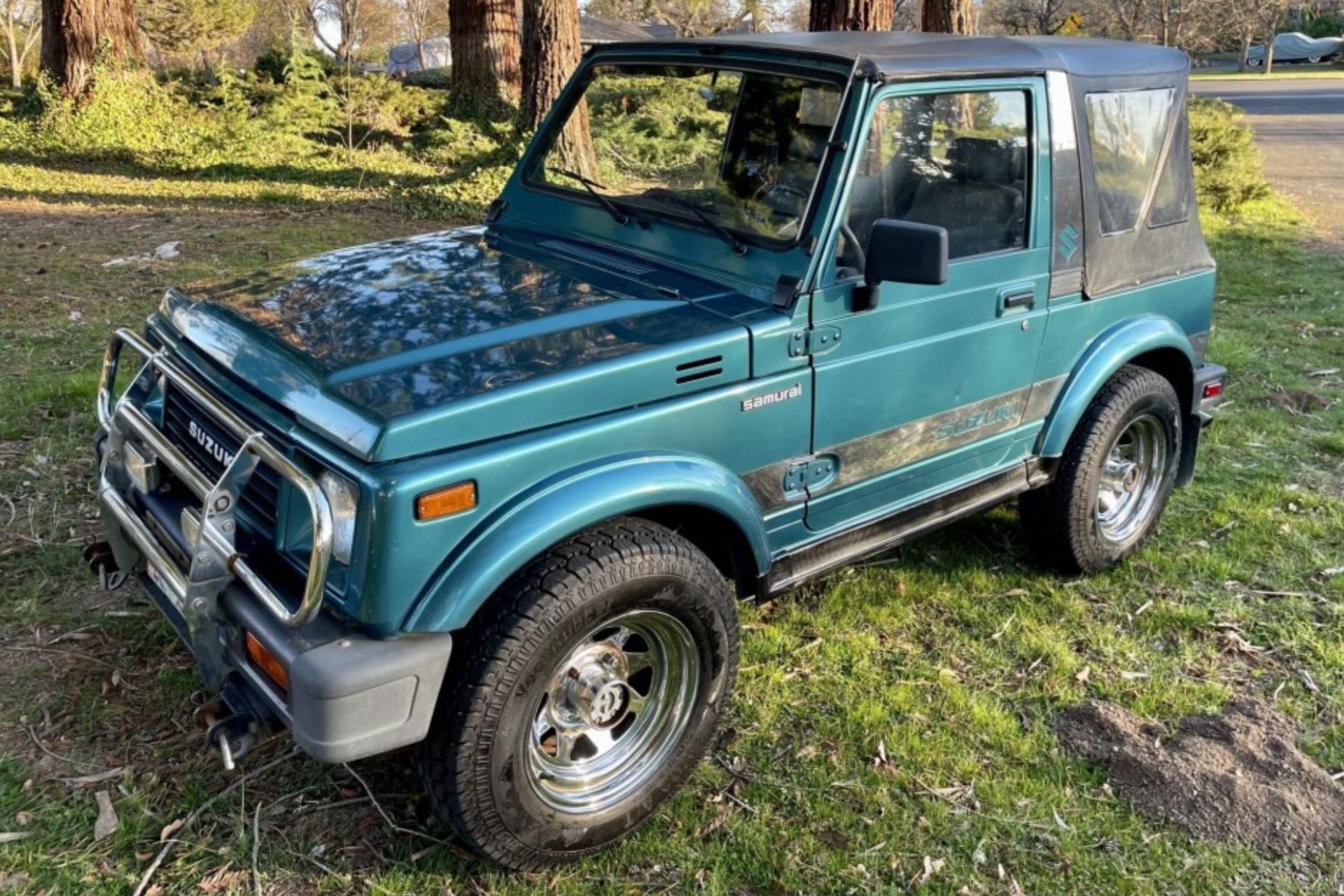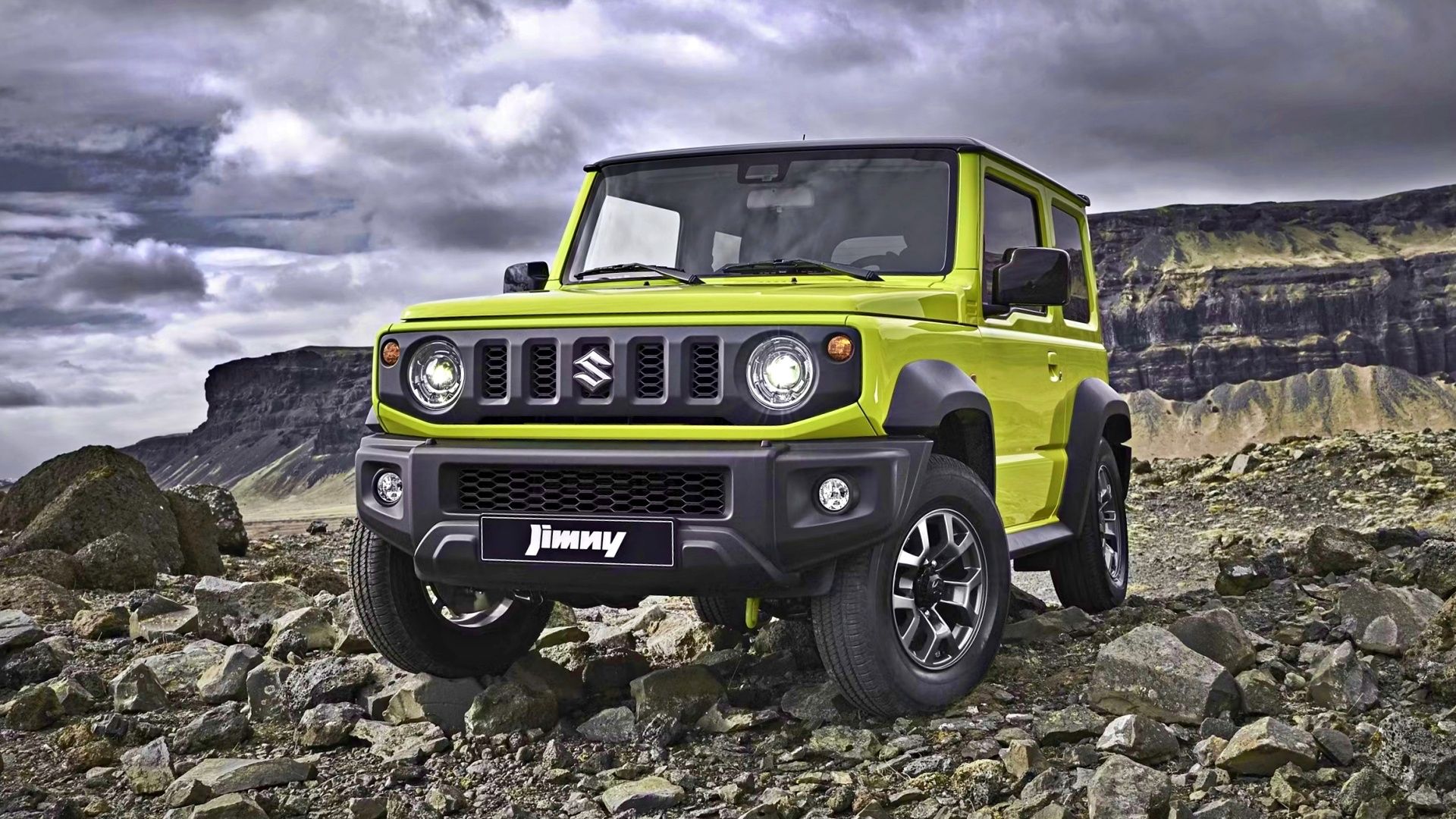Summary
- The Suzuki Samurai, which was actually a Suzuki Jimny, was unfairly labeled as dangerous and prone to rollovers, leading to slumping sales and its discontinuation in the U.S.
- The Jimny, which is still being produced today, is sold in almost 200 countries except the United States.
- The Samurai was popular in America due to its affordable price, true 4x4 capabilities, and nimble off-road performance, but bad press and negative consumer reports led to its downfall.
The Suzuki Samurai was a fun 4x4 that hit the U.S. in 1986 and actually outsold the Jeep Wrangler in the beginning. As much as the American off-roading community loved this sub-compact trail toy, it was unfairly tagged as dangerous, with onerous claims that it was prone to rollovers. The bad press resulted in slumping sales and less than ten years after it was introduced in the U.S., it was gone.
What a lot of people probably don't realize is that the Samurai was actually a Suzuki Jimny, an off-road mini SUV that has been made since the early 1970s. Even crazier, it continues to be made to this day and is sold in almost 200 countries. Everywhere except pretty much, the United States gets to enjoy these amazing and affordable 4x4s.
Right now, Jeeps are more popular than ever and Ram is bringing the sub-compact Rampage to American dealers in 2024, so there is a huge market here for mini off-roaders. Unfortunately, there are no plans to bring the Samurai or some other Jimny variant back to the States. Reportedly, Jimnys can be bought in Mexico, but they aren't U.S. street legal, and bringing them across the border is expensive, which defeats the purpose of an affordable 4x4. While we may not be able to get a Jimny here, we can still celebrate all the generations of one of the most fun rides ever made.
The Suzuki Samurai's Roots
A Jimny Is Born
Things started in the late 1960s with the Hope Motor Company, a Japanese automaker that built three-wheeled super-sub-compact cars that most of us would call golf carts. For some reason they got a wild idea to produce not just a four-wheeled vehicle, but a four-wheel drive one. The result was the HopeStar ON360, which featured a 21-horsepower two-stroke 296cc engine. Suzuki liked it so much that they bought the entire Hope company and branded this radical new vehicle the LJ10 (Light Jeep 10) that hit the market in 1970.
The first generation Jimny was classified as a "kei car" which is the smallest possible highway-legal passenger car in Japan. While the HopeStar ON360 was a complete flop, selling less than 20 units, once it got branded an LJ10 it was a runaway hit, taking Suzuki completely by surprise. It outsold the competing Mitsubishi Jeep in its first year, moving 5,000 vehicles on its home turf. Amazingly, the LJ10 was made entirely by hand in its first year of production, but its success prompted Suzuki to give it a proper assembly line production.
In order to keep its status as a kei car, which came with tax breaks and other privileges, the spare tire couldn't be mounted on the back like a Jeep, because it would make the vehicle longer than three meters in length. To solve this issue, Suzuki put the spare in the cab, which resulted in it being a three-seater. They eventually worked out this bit of weirdness and improved the Jimny's horsepower and performance in the first-gen model, which lasted until 1980.
The Jimny Goes Worldwide
Second Generation Jimny
The first-gen Jimny was a hit but was sold primarily in the Asian market. For the second generation, the feisty 4x4 became an international sensation, being sold in almost every corner of the globe. It also got upgrades in virtually every aspect from size to performance. The SJ40 Jimny 1000, intended for export, got a longer wheelbase and was widened for more stability.
The Jimny 1000 also got a whole host of more powerful optional engines from the 539cc two-stroke three-cylinder to the 1,900cc turbo inline four-cylinder. It was also available in many configurations like a half-door convertible, a two-door sub-compact pickup, and a five-door wagon. The biggest advancement of the second-gen Jimny however was the addition of metal doors in 1979, because it previously only came with soft doors.
Jimny Stats
- The Jimny has been sold in 194 countries
- Almost 3 million Jimnys have been sold since 1970
- A 1970 Jimny LJ10 originally sold for $2,195
The Jimny was known by many names around the world, but it was basically the same four-wheel drive bringer of fun. In Pakistan, it was known as the Suzuki Potohar, and in Thailand, the Suzuki Caribian, which are both weird names. In India, it was called the Maruti Suzuki Gypsy, which is a term that has since been canceled for being culturally insensitive, but those were different times. Spain got the Suzuki Santana, and Indonesia had the Suzuki Katana, which are decidedly more badass, but the U.S. would get the best name of all.
The Suzuki Samurai Takes The U.S. By Storm
The Jimny Comes To America
Still in the second-gen, Suzuki finally decided to export the Jimny to the United States in 1986, branded as the Samurai. The Japanese automaker was trying to do a soft roll-out, with just a handful of dealers, mostly on the coasts, but the sub-compact 4x4 was so in demand they ended up moving 47,000 units in the first year. Suzuki thought they would sell maybe 5,000 Samurais, so it was shocking in a good way that Americans embraced the import like that.
The reasons for the popularity of the Samurai in America were many, but the first thing was that it only cost $6,200, compared to the nearly $10,000 base model price of the Jeep Wrangler. Also, the Samurai was a true 4x4 with a transfer case, switchable four-wheel drive, and great low-speed torque. It was a light and nimble off-road champion that didn't break the bank, and that's a winning formula in any era or market.
Samurai Power, Performance, and Price
Engine | 1.3-liter I-4 |
Engine Output | 63 horsepower, 73 pound-feet of torque |
Transmission | Five-speed manual |
0-60 Time | 16.9 seconds |
Quarter-mile | 20.47 seconds |
Top Speed | 65 mph |
Price | $6,200 |
Yes, the Samurai's 63 horsepower 1.3-liter four-cylinder engine meant that it wasn't the fastest thing on the road, but it was a period-specific cool ride. In the late 1980s, anyone could advertise their love of fun by driving a nameless Toyota pickup, a convertible Fox Body Ford Mustang, or a roof-off Suzuki Samurai. As a testament to America's fondness for the Samurai, Bring a Trailer has auctioned dozens of them recently between $9,200 to $29,500, all of which are more than the original MSRP.
The Samurai Rolls Over And Out
Bad Press Slays The Samurai
The Suzuki Samurai was the biggest import sensation to hit American shores since the Beatles, but like the Fab Four, only lasted for a few years. While it was Yoko Ono who took down the Beatles, it was Consumer Reports that sunk the Samurai. The product-testing magazine rated the Samurai as dangerous and prone to roll-overs during normal driving, which wasn't true but the 4x4 was never able to recover from the negative press.
Consumer Reports put out a video of one of their testers driving a Samurai with outriggers, showing that sharp turns would cause it to roll over. Of course, the weight of the outriggers, which were to prevent the vehicle from actually flipping, was the reason the Samurai was going on two wheels and would have made any similar ride rollover. Suzuki actually sued Consumer Reports' publisher for libel, which was settled out of court, but the damage was done.
Suzuki Samurai In Popular Culture
- In episode three of Fear the Walking Dead a survivor was driving a Samurai
- A Samurai was featured prominently in Turbo: A Power Rangers Movie
- In the animated film, Scooby-Doo Meets the Boo Brothers, Shaggy and Scooby drove a Samurai
After that video was shown on every newscast in America, the Suzuki Samurai became the butt of late-night comedians' jokes. Jay Leno, guest hosting on The Tonight Show, said something to the effect of, "Instead of Rolls-Royce, the Suzuki Samurai is a Rolls Over." Prior to the 1988 Consumer Report slam, Suzuki was selling 8,000 Samurais a month, and after, sales completely disappeared. The Samurai limped on until 1995 when Suzuki discontinued it in the North American market.
The Jimny Lives On
Next-Gen Jimnys
Most Americans probably didn't even know that Suzuki made anything but motorcycles prior to the Samurai's arrival in 1986, but they are actually an automaker too. Most Americans also probably thought that Suzuki got out of the four-wheel business in 1995 when the Samurai was discounted, but they continue to produce things with more than two wheels, including the Jimny.
The third generation, introduced in 1998, saw the Jimny get up to 84 horsepower with a turbocharged 658cc engine and was extremely popular in Spain and Brazil. The fourth generation, which continues to this day, is the most attractive and capable of the entire run, reaching over 100 horses. Suzuki is even working on an all-electric Jimny, which could possibly be the least awful EV off-roader on the market.
There is however no news regarding Suzuki bringing the Jimny back to the U.S., which is a shame because this would be the perfect time for a return. Not only is 80s nostalgia at a crescendo right now, but Americans want relatively cheap sub-compact off-road toys more than ever. While the Jimny is available in Mexico, the U.S. Customs and Border Protection warns that there's a zero percent chance it could be legally imported, so we'll have to wait for Suzuki to realize what untapped potential a return to America is.

